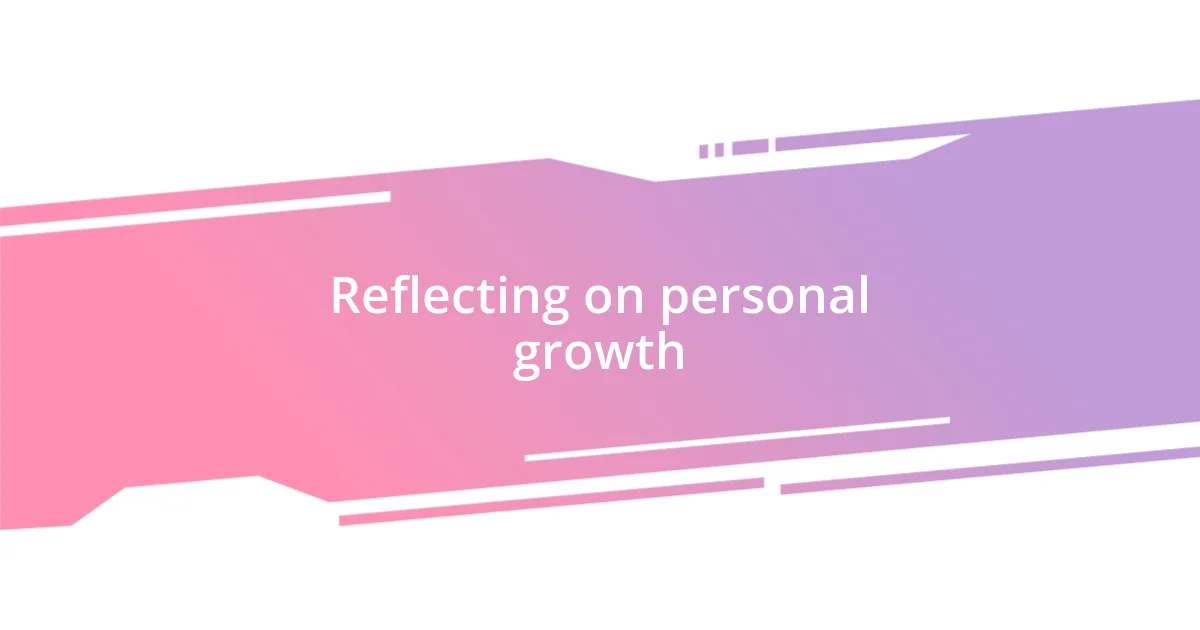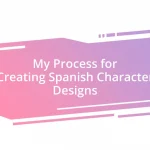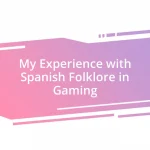Key takeaways:
- Recognizing online toxicity involves identifying harmful behaviors such as excessive negativity, cyberbullying, and trolling, which helps in protecting mental well-being.
- Effective strategies to manage online interactions include setting boundaries, curating positive communities, and practicing self-reflection to foster a healthier online experience.
- Building a supportive online presence and seeking communities enhances resilience and personal growth, transforming negative encounters into opportunities for connection and empowerment.

Understanding online toxicity
Online toxicity is a pervasive issue that often leaves us feeling drained and defeated. I remember the first time I encountered virulent comments on a post where I shared my artwork; the negativity struck me hard and made me question my talent. It’s astonishing how a few harsh words can overshadow countless positive responses, isn’t it?
What truly stands out to me is how anonymity fuels this behavior. Imagine being able to say whatever you want without fear of repercussions—many people exploit this, turning platforms into breeding grounds for bullying and hate. I’ve seen friends fall down this rabbit hole, letting the negativity seep into their daily lives, often feeling paralyzed by the weight of strangers’ opinions.
In my experience, recognizing the signs of online toxicity is the first step toward protection. I’ve often asked myself why I let certain comments bother me; the answer lies in our innate desire for validation. Do you ever find yourself scrolling through social media, getting caught up in negativity? It’s essential to remember that the loudest voices often don’t represent the majority.

Recognizing harmful behaviors online
Recognizing harmful behaviors online can sometimes feel like a daunting task, especially with the sheer volume of content we encounter daily. One time, while browsing a comment section, I stumbled upon a thread where people were tearing each other apart over minor differences in opinion. It struck me how easily a simple disagreement devolved into name-calling and personal attacks. Being mindful of such extreme reactions can help us identify toxic interactions early on.
Here are some indicators to look out for when trying to recognize harmful behaviors online:
- Excessive negativity: Frequent insults or belittling remarks directed at individuals or groups.
- Cyberbullying: Targeting someone with the intention to cause harm, often through harassment or intimidation.
- Trolling: Deliberately provoking others by posting inflammatory comments to elicit strong reactions.
- Doxxing: Sharing personal information about someone without their consent to intimidate or threaten them.
- Gaslighting: Manipulating someone into questioning their own reality or feelings in discussions.
Understanding these signs has helped me navigate online spaces more confidently. The sadness I used to feel when encountering such behaviors has transformed into a proactive stance, allowing me to protect my mental space while still engaging positively with the community.

Strategies to manage online interactions
When it comes to managing online interactions, one of the most effective strategies I’ve adopted is setting clear boundaries. For instance, I decided to mute or block individuals who continuously spread negativity on my feed. This simple action brought me immediate relief; I realized how liberating it feels not to engage with toxic comments. Have you ever felt that weight lift when you control your surroundings? It made me rethink my online space and prioritize my mental well-being.
Another strategy that resonates deeply with me is curating my online communities. I took the time to find spaces where positivity thrives and constructive criticism is welcomed. Joining supportive groups, like an art community that fosters encouragement rather than criticism, has enriched my experience. It’s fascinating how the right environment can transform your online interactions, isn’t it? I’ve forged meaningful connections that uplift rather than drain me, which is invaluable in today’s digital landscape.
Finally, practicing self-reflection has proven to be a game changer. I often find myself pausing to evaluate how certain interactions affect my mood. One time, after an uncomfortable exchange with someone online, I jotted down my feelings and realized I was internalizing their negativity. Acknowledging this emotional response enabled me to respond mindfully rather than reactively. How often do we let external opinions dictate our feelings? Embracing this practice has taught me that my emotional health is paramount and requires active nurturing.
| Strategy | Description |
|---|---|
| Setting Boundaries | Establishing limits for engagement, such as muting or blocking negative individuals. |
| Curating Communities | Joining supportive groups that promote positivity and constructive feedback. |
| Self-Reflection | Regularly evaluating your emotional responses to online interactions. |

Tools for reducing online negativity
When it comes toTools for reducing online negativity, one resource that has really helped me is using content filter settings on social media platforms. I remember when I first realized I could tailor my feed to show more of what I loved and less of what brought me down. The moment I started using those filters, it was like opening the windows to a brighter room—less clutter and drama, more positivity and inspiration! Have you ever noticed how your mood shifts based on the content you consume? It’s truly enlightening.
Another handy tool I utilize is the “report” feature, which allows users to flag harmful content. The first time I reported an inflammatory post, I felt a wave of empowerment wash over me. It was a small act, but contributing to a safer online space is important. I often ask myself, “If I don’t take a stand, who will?” Knowing that I’m actively combating negativity, even in small ways, makes me feel more connected to the community. It’s fascinating to realize that every little action counts.
Incorporating apps that promote mental well-being has been a game changer for me as well. For instance, I’ve started using mindfulness apps that remind me to take breaks from the screen throughout the day. I used to get caught in the scroll cycle, feeling drained by constant exposure to negativity. Now, those reminders prompt me to recharge—whether through a short meditation or just stepping away from my device. Do you find that giving yourself a moment can change your entire perspective? I truly believe these little tools have transformed my online experience into one that feels lighter and more positive.

Building a positive online presence
Building a positive online presence starts with intentionality. I’ve learned the importance of sharing content that reflects my values and passions. For example, when I began posting about mental health awareness, I noticed my engagement shifted from passive scrolling to meaningful conversations. Have you ever tried to amplify a cause you care about? It can make your online interactions feel so much more rewarding.
It’s also vital to nurture authentic connections. I remember reaching out to individuals who inspired me and inviting them for virtual coffee chats. These conversations often turned into collaborations, creating a ripple effect of positivity across our networks. I find that when I invest time in building genuine relationships, the online space feels much less daunting. How often do you take the time to cultivate connections rather than just scroll past them?
Lastly, I can’t stress enough the value of positive reinforcement. I’ve made it a habit to comment and engage with uplifting content, whether it’s supporting a friend’s art project or sharing inspirational quotes. This practice doesn’t just boost others; it lifts my spirits too. Have you considered how your words can brighten someone else’s day? It’s a beautiful realization that fosters a community of encouragement, amplifying the positive vibes around us.

Seeking support and community
I’ve discovered that seeking support and finding a community can make a world of difference in handling online toxicity. I recall when I first joined a mental health group on social media. Immediately, it felt like diving into a warm ocean after being in a cold, harsh wind. Suddenly, I wasn’t alone in navigating the waves of negativity; I had a collective of voices sharing in the struggle and triumph. Have you ever joined a group that truly resonated with your experiences? For me, it was a turning point.
Engaging with supportive communities not only helps combat negativity but also fosters growth. I remember a time when I shared my personal story about dealing with online haters. The comments that poured in—filled with empathy and understanding—were profoundly comforting. It’s amazing how a simple shared experience can create such an uplifting environment. Do you think sharing your challenges could lead to unexpected connections? I believe it’s essential; you never know who might be waiting to empathize.
Sometimes, it’s not just about seeking support; it’s also about giving it. Volunteering my time to mentor others who were newly navigating online spaces has been incredibly rewarding. It reminds me of a time when I felt lost and someone offered me guidance. Now, I find joy in helping others find their footing. Isn’t it incredible how that cycle of support nourishes both giver and receiver? In my experience, building a community isn’t just about finding solace; it’s about creating a safe space that connects and empowers all of us.

Reflecting on personal growth
Reflecting on my personal growth through online interactions has been quite the journey. I remember a time when I let negative comments pierce me deeply, leaving me feeling defeated. But over the years, I’ve learned to see these experiences as opportunities for introspection and resilience. Have you ever taken a moment to reflect on how online challenges have actually helped shape your character? For me, each encounter has built a stronger foundation for who I am today.
There was a defining moment when I decided to confront my insecurities instead of letting them govern my online presence. I began sharing my vulnerabilities and thoughts more openly, which sparked a surprising wave of support from my followers. This openness didn’t just draw people closer; it allowed me to connect with others who faced similar struggles. It made me realize how our shared experiences can foster community and healing. Have you experienced that kind of connection when being genuine? It’s a profound way to turn what once felt like a burden into a bridge to others.
Looking back, I see that choosing to focus on what I can control has been a crucial part of my growth. Instead of dwelling on negativity, I embraced positive affirmations and feedback. I can vividly recall a time when a simple compliment from a stranger transformed my entire day, igniting my motivation to spread the same positivity. It’s remarkable how a few kind words can shift our mindset. Wouldn’t you agree that finding power in positivity can completely change our experience online? Personally, it’s become my mantra—focusing on the good has illuminated my path forward.














